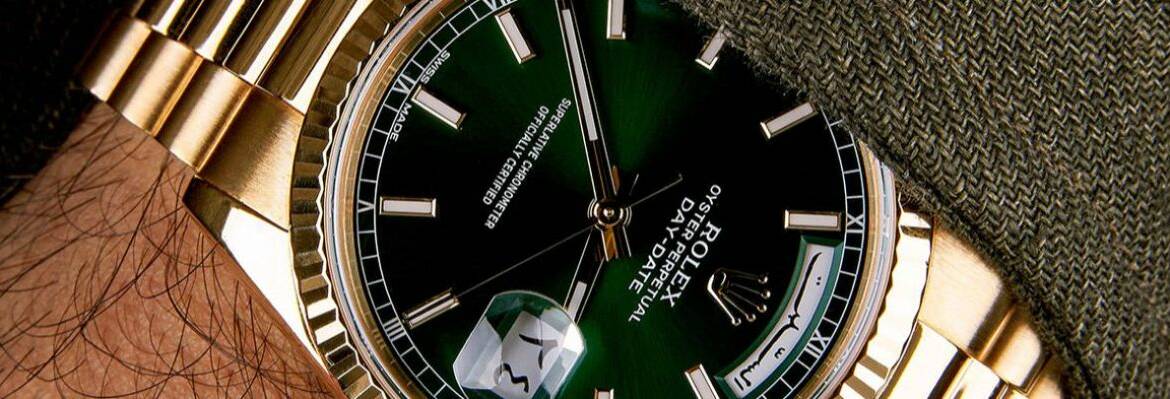Luxury Watch Stats & Facts | How Many Luxury Watches Are Sold Each Year?
Wristwatches have slowly become a luxury item. They became popular between 1914 and 1918 during World War One, when soldiers wore them as a practical way to tell time. Sought out for their masterful and lavish craftsmanship, today’s luxury wristwatches are produced with high-end, premium-quality materials and techniques. With the global economy gradually recovering from the effects of the covid 19 pandemic, the consumer market is also growing steadily. This article explores luxury watch stats and facts — how many luxury watches are sold each year on different continents.
1. The global luxury watch market
Since the covid 19 pandemic, there has been a significant decline in the luxury watch market worldwide, in the US, Europe and other major continents. In 2020, the market was valued at $23.623 billion with a compound annual growth rate (CAGR) of 3.25% from 2021 to 2026. Major countries in Europe, Asia and America have always been the highest consumers. Understandably, sales would decline dramatically during that period in light of various restrictions during the pandemic, limited movement and the need to spend cautiously. 2022 saw a sharp decline in the value of Swiss watch shipments by 22% and 33% in volume. By the second quarter, it had declined down to 60% in value. It was only after the pause in the lockdown and ease of movement restrictions that this rapid decline was slowed down.
Today, the demand for luxury goods has increased. Consumers prefer premium, high-quality watches made with innovative technology and sophisticated materials. Even though our mobile phones provide us with all the information we need about the time, date, weather, etc., it’s surprising that people still find a need for wristwatches. This is because it is seen as a status symbol and will probably remain like this for the foreseeable future. Even the second-hand luxury wristwatch market is quite large; some platforms allow you to buy and sell your luxury watch at reasonable and affordable prices.
Using a luxury wristwatch made with high-quality materials like steel, precious materials and bi-metallics takes accessorising to a whole new level. With most luxury market consumers, using these products is more about exclusivity than an expense.
2. The rising demand for luxury goods
The need for exclusivity is one of the major reasons for the continuous rise in demand for luxury goods. Most luxury enthusiasts aim for brands that aren’t necessarily accessible to the general public, regardless of the price. In the world of luxury products, exclusivity is a measure of status, which explains why members of certain wealth brackets are quite invested in the market.
Quality plays a major part, too; although the price always determines quality, most well-known brands do not compromise on quality materials for their products. We also have to consider western influence as well as brand awareness. All these have contributed to the rising demand for luxury goods worldwide.
In terms of luxury watch manufacture and distribution, Switzerland continues to maintain its place as a leading contender. Surprisingly, their highest consumers come from Asian countries like Singapore and Japan. The Asia-pacific region is currently the largest consumer of luxury watches. China provides a competitive market for luxury watch manufacturers.
Since they have a large population, a yearly increase in millionaires and billionaires and a high demand for luxury goods, brands like Rolex, Cartier and Chanel can thrive in this setting. Statistics indicate that from January to November of 2020, the Swiss watch industry is said to have exported wristwatches worth up to $2.39 billion dollars – an impressive increase of 17.1% from 2019.
3. Distribution channels
Some of the major producers and exporters of luxury wristwatches include China, France, Switzerland and Germany. They have a worldwide market and utilise multiple distribution channels to satisfy this demand. The two main fragments of the distribution channel can be classified into offline and online supply.
Even with technological advancements and the rise in online shopping, offline distribution is still said to be the larger distribution channel. Most luxury watch enthusiasts prefer to see and feel these watches before making a purchase, this is why online purchases are significantly less than offline purchases. Customers also feel safer buying these products in brick-and-mortar stores due to the high prices attached to them. Even though online orders have become safer over the years, there’s still a high risk of losing a luxury product in transit. An offline purchase feels more secure for consumers.
However, the online distribution segment is predicted to reach a record high between 2022 and 2030. Since more and more people are out for convenience, value-added services, easy return policies and centralised customer service. Online channels can offer all of this and more. Also, globally recognised brands like Patek Philippe, Rolex and Ralph Lauren, who have an excellent offline presence, recognise the need for a good online presence, too, since they need to increase their market reach.
4. Regional sales
The luxury watch market can be classified geographically into Europe, North America, South America, Asia Pacific, Africa and the Middle East. As mentioned above, the Asia Pacific region is currently the largest consumer of luxury wristwatches worldwide and is predicted to remain the largest until 2026. The economic growth in this region, especially in China and India, has contributed largely to the market. With this region producing more millionaires and billionaires each year, there is a higher standard of living, leading to an insurgence of multiple luxury brands in these countries.
Although the market is quite competitive, there is still a high demand for growth. Asia has one of the world’s largest populations; according to the United Nations population fund, the Asia Pacific contains up to 60% of the world’s population, which makes up about 4.3 billion people. Such a high population of people translates to a large market, and luxury brands have taken advantage of this. Luxury watch brands, especially European brands, are the main producers and distributors of these products. Europe is the second highest consumer of luxury brands worldwide even though it is one of the leading manufacturers too.
Much like Asia, this continent possesses many millionaires and billionaires who contribute greatly to the growth of this market. Being the home to large companies like Rolex, Panerai, Audemars, Piglet, etc, also contributes to the market. Statistics show that in 2017, the Swiss watch industry made a total export worth CHF 21.2 billion; with an increase in brand exposure and luxury trends, this figure is likely to increase on a large scale.

